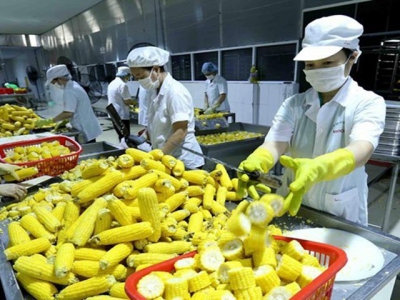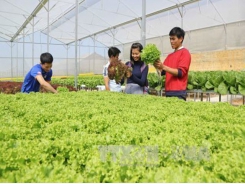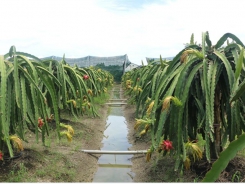RCEP helps Vietnamese agricultural products reach out to the world

The mammoth trade deal Regional Comprehensive Economic Partnership (RCEP) is expected to unlock more export markets for Vietnamese agricultural products, according to insiders.
Sweet corn processing for export (Photo: VNA)
At the “RCEP-UKVFTA opportunities to promote value chains of Vietnamese agricultural products” recently held in Ho Chi Minh City, Chairman of the Vietnam Farms and Agricultural Enterprises Association (VFAEA) Le Duy Minh laid stress on the world’s largest trade pact which covers a market of 2.2 billion people, with a combined GDP of 26.2 trillion USD or about 30 percent of global GDP.
RCEP is said to open up ample opportunities for Vietnamese agro-forestry-aquatic products since it forms a large market that includes Vietnam’s key importers such as China, ASEAN, Japan and the Republic of Korea (RoK), he added.
Nguyen Anh Dung, from the Ministry of Agriculture and Rural Development’s Agro Processing and Market Development Authority, said China is the second largest importer of Vietnamese agro-forestry-aquatic products with total imports worth 10.36 billion USD in 2020. Meanwhile, ASEAN came fourth with 3.69 billion USD, Japan fifth with 3.42 billion USD and the RoK seventh with 2.34 billion USD.
According to Secretary of the Vietnam Vegetables Association Tran Le Nguyen, only ten types of Vietnamese fruits are licensed to be exported to China via official channel, and with RCEP, negotiations for other fruits like durian, passion fruit, grape fruit, avocado, star apple, and rose apple will be much easier.
RCEP is also said to create favourable conditions for more Vietnamese products to enter Japanese, RoK, Australian, Thai, Malaysian and New Zealand markets, he added.
However, the Ministry of Industry and Trade said Vietnamese exporters may face fierce competition from their foreign rivals right on the domestic playground as other RCEP members like China and other ASEAN member states have similar fruits with better quality.
In this context, Vietnam needs to build a stable agriculture in which farmers must ensure food safety and improve product quality while businesses should help farmers to form a stable value chain, said Nguyen Dinh Tung, General Director of Vina T&T
Related news
Tools

Phối trộn thức ăn chăn nuôi

Pha dung dịch thủy canh

Định mức cho tôm ăn

Phối trộn phân bón NPK

Xác định tỷ lệ tôm sống

Chuyển đổi đơn vị phân bón

Xác định công suất sục khí

Chuyển đổi đơn vị tôm

Tính diện tích nhà kính

Tính thể tích ao



 Needed - A proper strategy to attract FDI…
Needed - A proper strategy to attract FDI…  Total of 205 traders allowed to export rice
Total of 205 traders allowed to export rice